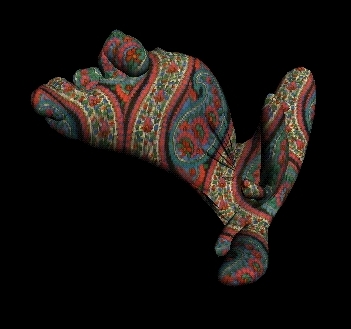 Digital Embryos
Digital Embryos 
 Digital Embryos
Digital Embryos 
BackgroundDigital embryos are novel three dimensional objects.
They are created , manipulated, and viewed in a computer graphics environment.
Currently the 3D environment for these objects is Silicon Graphics Inventor,
although 2D images can be viewed on almost any platform. Digital embryos are
created using a stochastic process which is analogous to embryological development;
hence the name. The novelty of the objects arises from the random aspects of
the algorithm. At the same time, because of the embryological nature of the
algorithm, digital embryos resemble living forms; although they do not usually
look like any particular plant or animal species. Digital embryos may have
applications in art, entertainment, research, or anywhere novel 3D shapes are
useful. In this vision laboratory, our interest is in vision research, and
the embryos are used to study camouflage, visual learning, and object recognition.
Brady, M. J., & Kersten, D. (2003). Bootstrapped learning of novel objects. J Vis, 3(6), 413-422.(pdf) (http://journalofvision.org//3/6/2/)
For detailed information, see: Mark Brady's Ph.D. thesis on PSYCHOPHYSICAL INVESTIGATIONS OF INCOMPLETE FORMS AND FORMS WITH BACKGROUND
Contact Mark Brady at:mark.brady@ndsu.edu
© 2004 Computational Vision Lab, University of Minnesota, Department of Psychology.